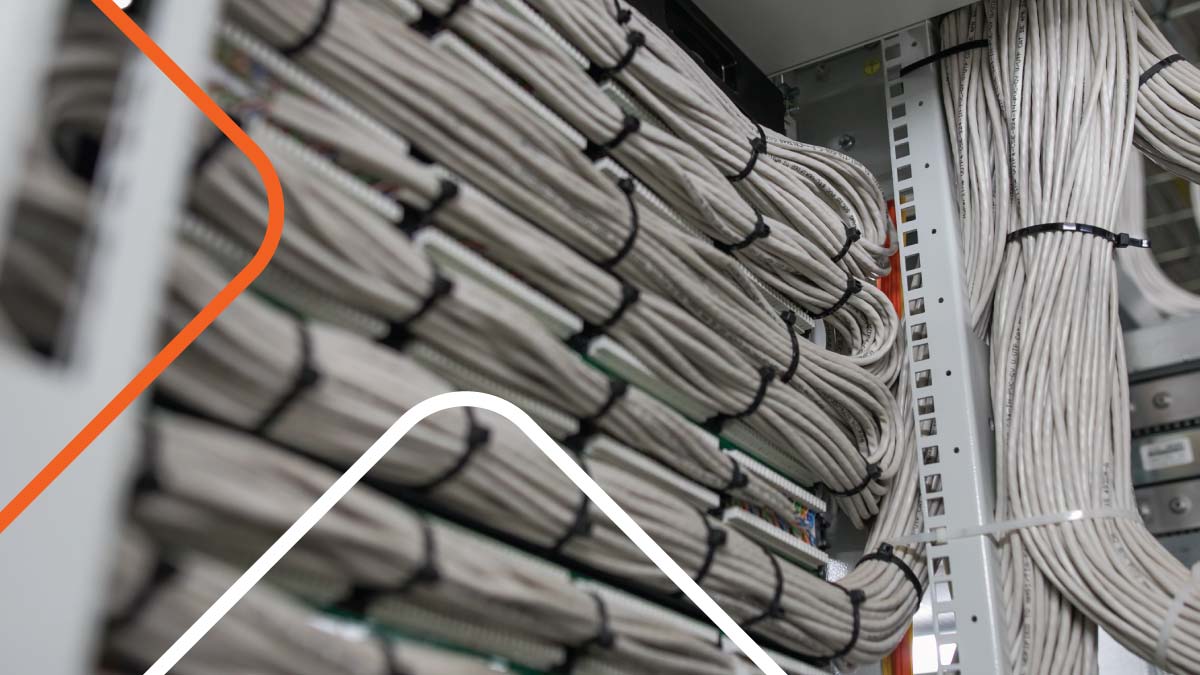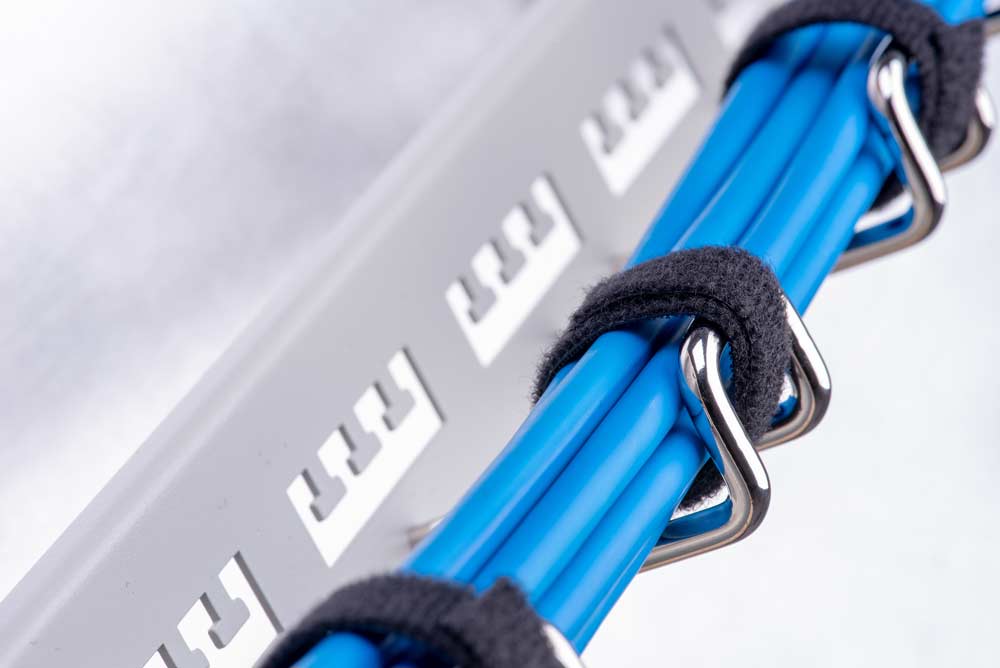In any network infrastructure setup, the proper cabling between the Main Distribution Frame (MDF) and Intermediate Distribution Frame (IDF) is crucial for maintaining network efficiency and reliability. Understanding the components of the MDF and IDF, as well as following best practices in cabling, can optimize performance and reduce potential downtime and maintenance costs. This article will guide you through the key considerations and steps involved in MDF to IDF cabling, providing a comprehensive overview of the best practices to implement onsite.
Understanding MDF and IDF in network infrastructure
Before diving into the cabling process, it’s important to have a clear understanding of what the MDF and IDF are and their significance in network infrastructure.
When it comes to setting up a robust network infrastructure, the Main Distribution Frame (MDF) and Intermediate Distribution Frame (IDF) play important roles in supporting seamless connectivity and efficient data transmission. Let’s take a closer look at these essential components to grasp their functions and importance in network design.
Defining MDF: The main distribution frame

The MDF, also known as the main cross-connect, is the central point where all incoming lines from service providers terminate. It acts as the primary hub for distributing data, voice, and video signals throughout the network. The MDF is typically located in a secure and climate-controlled room, providing a stable environment for network equipment.
Within the MDF, you’ll find a structured cabling system that organizes and interconnects incoming and outgoing communication lines. This setup allows for efficient management of network connections, streamlining troubleshooting and maintenance tasks. Additionally, the MDF often houses essential networking equipment such as switches, routers, and firewalls, forming the backbone of the entire network infrastructure.
Exploring IDF: Intermediate distribution frame
An IDF, on the other hand, is a secondary connection point that receives signals from the MDF and distributes them to individual network devices within a specific area, such as a floor or department. IDFs are strategically placed to minimize cable runs and optimize network performance.
By strategically locating IDFs throughout a building or campus, network administrators can reduce the length of cabling required to connect end-user devices, thereby improving network efficiency and reducing the risk of signal degradation. These distribution frames are equipped with patch panels, switches, and other networking components to facilitate seamless communication between devices within a localized network segment.
The importance of proper MDF to IDF cabling
Proper cabling between the Main Distribution Frame (MDF) and Intermediate Distribution Frame (IDF) is crucial for the seamless operation of a network infrastructure. The MDF serves as the central point where incoming lines from internet service providers or external networks are terminated, while the IDF acts as a distribution point that connects end-user devices. The connection between these two points must be meticulously planned and executed for optimal network performance.
Establishing a robust cabling system between the MDF and IDF not only enhances network efficiency but also plays a vital role in future scalability. By adhering to industry best practices and standards, such as TIA/EIA-568, organizations can future-proof their network infrastructure and accommodate technological advancements without the need for extensive rewiring.
Ensuring network efficiency and reliability
When cabling the MDF to IDF, it’s imperative to select cables that meet current requirements and can support future bandwidth needs. Category 6A or higher cables are recommended for their superior performance in handling high-speed data transmission and reducing crosstalk. Implementing proper cable management techniques, such as using cable trays, racks, and cable ties, can streamline the installation process and facilitate maintenance tasks.
Moreover, incorporating cable management tools like cable labels and patch panels can significantly improve troubleshooting procedures by providing clear identification of cable pathways and connections. This organized approach not only saves time during network maintenance but also minimizes the risk of human errors that could lead to network outages.
Reducing potential downtime and maintenance costs
Inadequate cabling practices can result in network inefficiencies, downtime, and increased operational costs. Regular inspections and maintenance of the cabling infrastructure are essential to proactively identify and rectify issues. By conducting routine cable audits and performance testing, network administrators can detect potential problems early on and implement corrective measures before they escalate into critical issues.
Investing in high-quality cabling components and equipment may require an initial upfront investment, but it can yield long-term benefits by minimizing the need for frequent repairs or replacements. By prioritizing the quality of cabling materials and installation practices, organizations can safeguard their network reliability, reduce downtime, and optimize operational efficiency in the long run.
Planning your MDF to IDF cabling
Before embarking on the cabling process, it’s essential to plan and assess your current network infrastructure to ensure a smooth installation.
Planning the cabling for your Main Distribution Frame (MDF) to Intermediate Distribution Frame (IDF) connection is a critical step in maintaining an efficient and organized network setup. By carefully strategizing the cabling layout, you can optimize data flow and minimize potential disruptions in the future.

Assessing your current network infrastructure
Begin by evaluating your existing network layout and identifying any potential bottlenecks or areas for improvement. Note existing pathways and consider any cable management challenges you may face. Assess the capacity of your MDF and IDF to determine if any upgrades or expansions are necessary.
Conducting a thorough assessment of your current network infrastructure involves understanding the physical layout of your cabling and the network’s performance and reliability. Look for any outdated equipment or components that may hinder optimal connectivity and plan for their replacement or upgrade as needed.
Determining cabling needs and capacity
Next, determine the specific cabling needs for connecting your MDF to IDF. Measure the distances between the two distribution frames to calculate the required cable lengths accurately. Consider any environmental factors, such as fire codes or cable routing restrictions, that may affect the cabling process. It’s crucial to ensure that the chosen cables have the bandwidth to meet the current and future network demands.
When determining the cabling needs and capacity for your MDF to IDF connection, take into account the potential for future growth and scalability. Selecting cables with higher bandwidth capabilities than your current requirements can help future-proof your network infrastructure and save you from costly upgrades down the line. Additionally, consider implementing cable management solutions such as cable trays or labels to facilitate easier maintenance and troubleshooting in the future.
Implementing MDF to IDF cabling: Step-by-step guide
Now that you have planned and prepared for the cabling process, it’s time to implement the MDF to IDF cabling onsite.
Preparing for installation
Prior to installation, gather all the required equipment, including cables, connectors, cable management tools, and testing equipment. Ensure that the work area is clean, well-lit, and free from any potential hazards. Obtain any necessary permits or approvals, and follow safety procedures throughout the installation.
Additionally, it is advisable to create a detailed layout plan that outlines the path the cables will take from the Main Distribution Frame (MDF) to the Intermediate Distribution Frame (IDF). This plan should consider factors such as cable lengths, potential obstacles, and optimal cable routing to minimize signal interference. By having a well-thought-out plan in place, you can streamline the installation process and reduce the likelihood of errors.
Running the cables
When running the cables between the MDF and IDF, follow the most direct route while adhering to any applicable building codes or regulations. Use cable trays, raceways, or conduits to protect and organize the cables. Avoid running cables alongside power lines to minimize interference. Use appropriate connectors and termination methods for a secure and reliable connection.
Moreover, consider implementing cable management best practices, such as maintaining proper bend radii, securing cables at regular intervals, and labeling cables for easy identification. These practices not only contribute to a neater and more organized cabling infrastructure but also facilitate future maintenance and troubleshooting efforts.
Testing and troubleshooting
After the cables are properly installed, thoroughly test the connectivity and performance. Use testing equipment to verify cable continuity, check for any faults or breaks, and ensure proper signal transmission. Troubleshoot and address any issues promptly to avoid potential network disruptions.
Furthermore, creating comprehensive documentation of the cabling installation, including cable types, lengths, termination points, and test results, can serve as a valuable reference for future upgrades or modifications. This documentation aids in troubleshooting efforts and enhances overall network management and maintenance efficiency.
Maintaining your MDF to IDF cabling
Once the installation is complete, ongoing maintenance keeps your MDF to IDF cabling in optimal condition. Proper maintenance ensures the smooth operation of your network and extends the lifespan of your cabling infrastructure, saving you time and money in the long run.
One crucial aspect of maintaining your MDF to IDF cabling is to establish a regular maintenance schedule. By setting up routine inspections and cleaning sessions, you can proactively identify and address any potential issues before they escalate into larger problems that could disrupt your network operations.
Regular inspection and cleaning
Regularly inspect the cable infrastructure, paying attention to cable connections, terminations, and any signs of wear or damage. Clean the cables and connectors using appropriate techniques and materials to prevent signal degradation and improve the longevity of the cabling system. Dust, dirt, and other contaminants can accumulate on cables over time, leading to signal loss and performance issues. By keeping your cables clean, you can maintain optimal signal quality and ensure reliable network connectivity.
Additionally, during inspections, check for proper cable management and organization. Over time, cables can become tangled or disorganized, making it difficult to trace and troubleshoot connectivity issues. Implementing cable management best practices, such as using cable ties, labels, and cable management panels, can help maintain a tidy and organized cabling infrastructure.
Upgrading and replacing cables
As technology advances and network requirements evolve, it may be necessary to upgrade or replace cables to meet your growing demands. Stay informed about industry standards and emerging technologies to ensure your cabling infrastructure remains efficient and up to date. Upgrading to higher-performance cables, such as Category 6A or fiber optic cables, can support faster data transmission speeds and accommodate increasing bandwidth requirements.
When upgrading or replacing cables, consider future scalability and flexibility. Plan for potential growth in your network infrastructure to avoid frequent cable replacements and minimize disruptions to your operations. By investing in high-quality cables and planning for future expansion, you can future-proof your cabling infrastructure and ensure long-term reliability and performance.
Conclusion
In summary, proper MDF to IDF cabling is vital for maintaining network efficiency and reliability. By understanding the MDF and IDF components, following best practices, and planning and implementing the cabling process effectively, you can ensure optimal network performance while reducing potential downtime and maintenance costs. Regular maintenance and upgrades further contribute to extending the lifespan of your cabling infrastructure and keeping pace with technological advancements.







